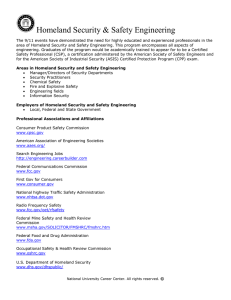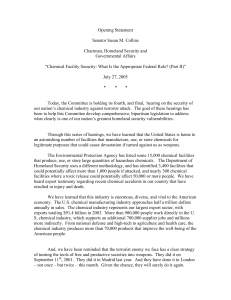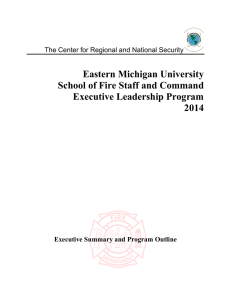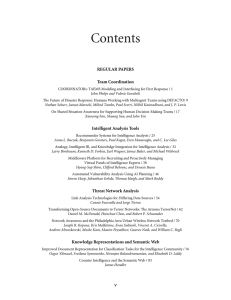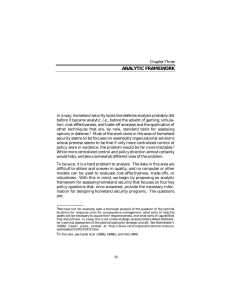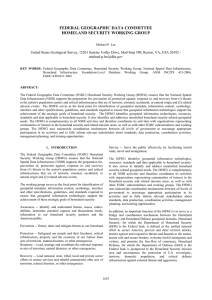Tuesday 10 Cebrowski Institute HFN Brown Bag The Information Sharing Needs Analysis
advertisement
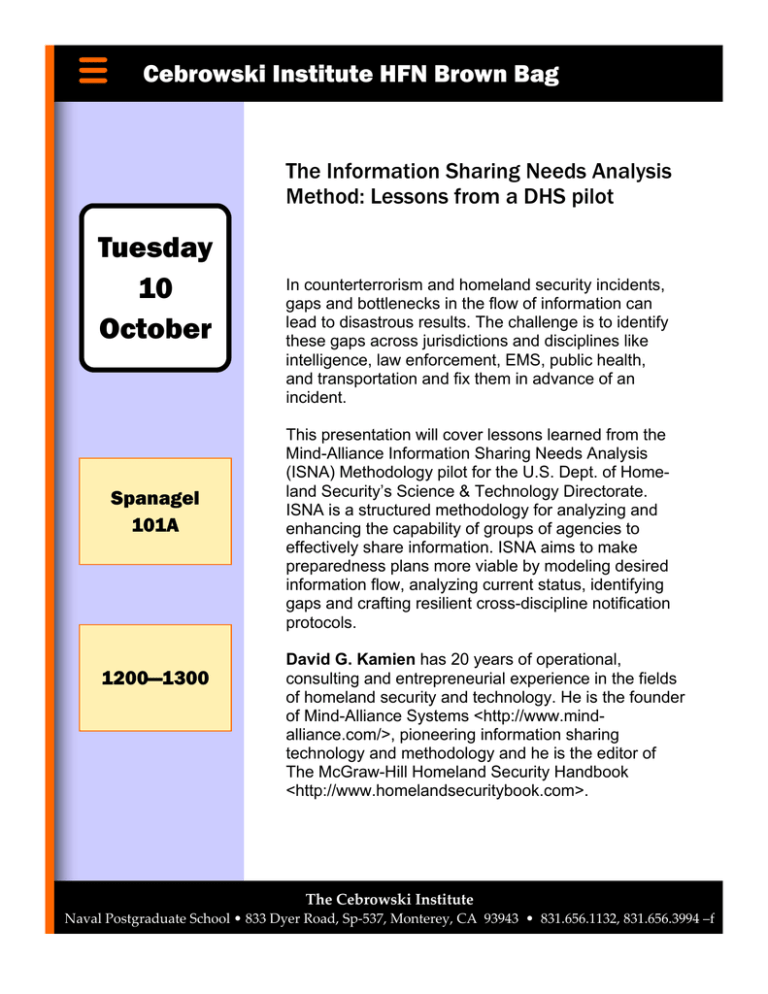
Cebrowski Institute HFN Brown Bag The Information Sharing Needs Analysis Method: Lessons from a DHS pilot Tuesday 10 October Spanagel 101A 1200—1300 In counterterrorism and homeland security incidents, gaps and bottlenecks in the flow of information can lead to disastrous results. The challenge is to identify these gaps across jurisdictions and disciplines like intelligence, law enforcement, EMS, public health, and transportation and fix them in advance of an incident. This presentation will cover lessons learned from the Mind-Alliance Information Sharing Needs Analysis (ISNA) Methodology pilot for the U.S. Dept. of Homeland Security’s Science & Technology Directorate. ISNA is a structured methodology for analyzing and enhancing the capability of groups of agencies to effectively share information. ISNA aims to make preparedness plans more viable by modeling desired information flow, analyzing current status, identifying gaps and crafting resilient cross-discipline notification protocols. David G. Kamien has 20 years of operational, consulting and entrepreneurial experience in the fields of homeland security and technology. He is the founder of Mind-Alliance Systems <http://www.mindalliance.com/>, pioneering information sharing technology and methodology and he is the editor of The McGraw-Hill Homeland Security Handbook <http://www.homelandsecuritybook.com>. The!Cebrowski!Institute!!! Naval!Postgraduate!School!•!833!Dyer!Road,!Sp"537,!Monterey,!CA!!93943!!•!!831.656.1132,!831.656.3994!–f!
